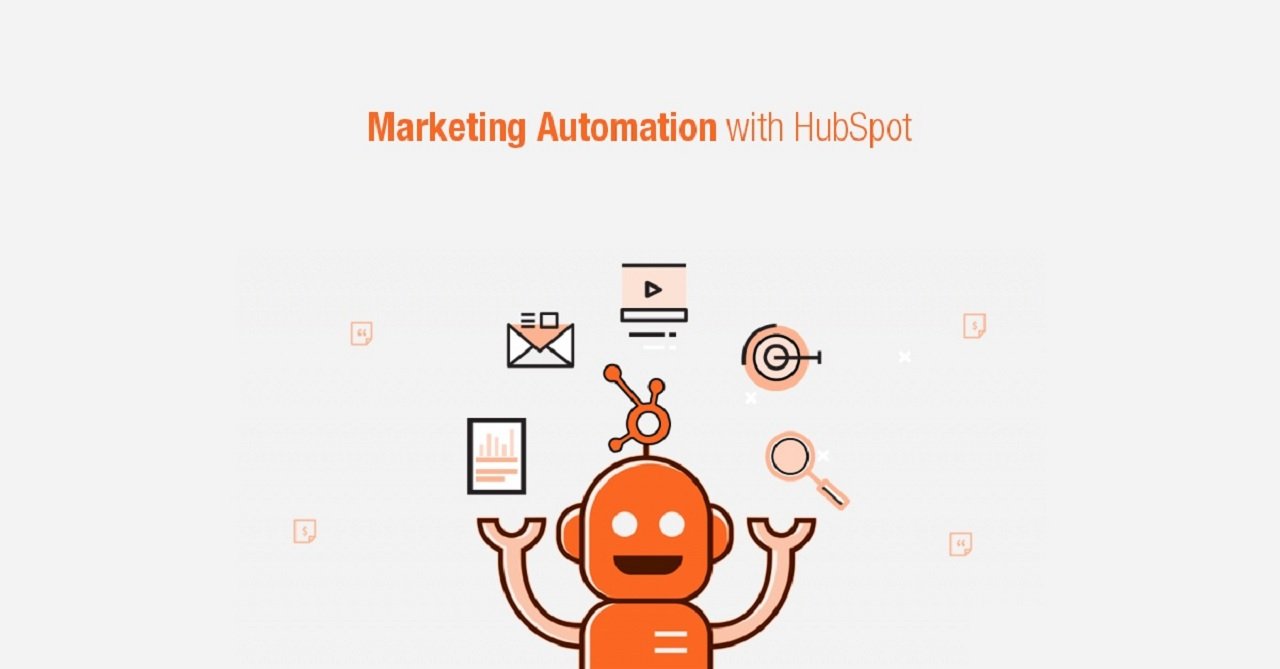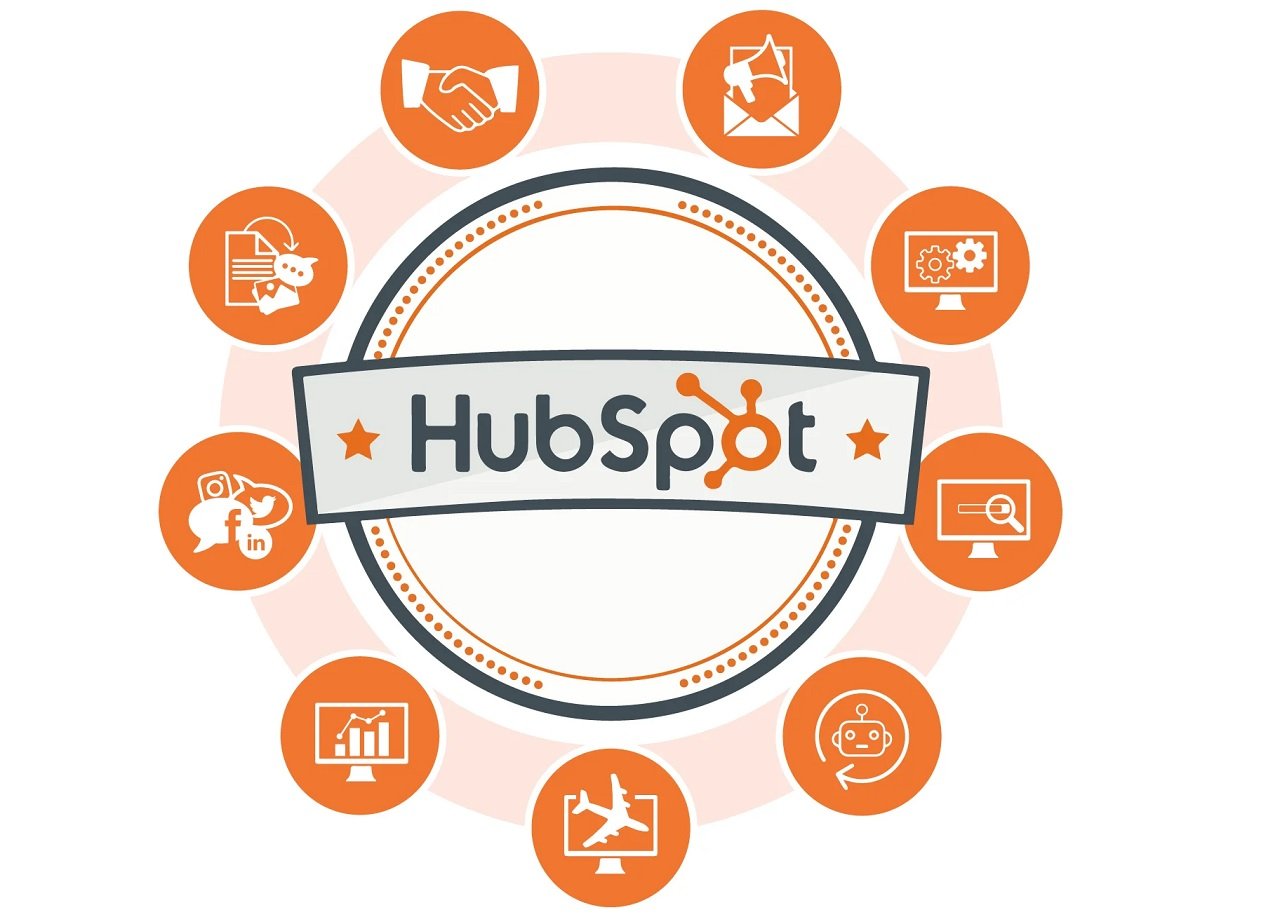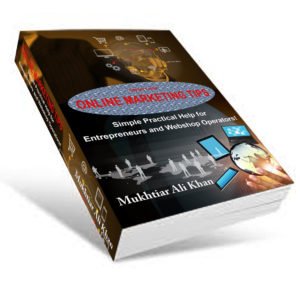Welcome to “The Ultimate Guide to HubSpot Marketing Automation” – your complete resource for understanding and implementing the power of HubSpot.
In this comprehensive guide, we will explore everything you need to know about HubSpot Marketing Automation, the benefits it offers, and how you can use it to supercharge your marketing efforts. So, if you’re ready to unlock the potential of HubSpotAutomation and take your business to new heights, let’s dive right in! HubSpot Marketing Automation is a game-changer for businesses seeking to streamline their marketing efforts and improve customer engagement.
By implementing the strategies and features discussed in this guide, you can harness the full potential of Marketing Automation to achieve remarkable results for your business. Happy automating!
- Getting Started with HubSpot
- Key Features of HubSpot
- Building Effective Marketing Workflows with HubSpot
- Leveraging Email Marketing Automation in HubSpot
- Harnessing the Power of Personalization and Segmentation
- Integrating Social Media Automation in HubSpot
- Creating High-Converting Landing Pages and Forms
- Measuring Success with HubSpot Analytics and Reporting
- Advanced Tips and Tricks for HubSpot Marketing Automation
- Best Practices for Successful Marketing Automation
- Conclusion
Getting Started with HubSpot

If you’re ready to take your marketing efforts to the next level, you’ve come to the right place. In this guide, we’ll walk you through the essential steps to get started with HubSpot Marketing Automation and empower your business with the tools and knowledge needed to drive remarkable results.
From setting up your account to navigating the user-friendly dashboard and integrating your marketing channels, we’ll cover it all. So, buckle up and get ready to embark on a journey that will supercharge your marketing efforts and transform the way you engage with your audience. Let’s dive into the world of HubSpot Marketing!
Setting Up Your HubSpot Account
To embark on your HubSpot Marketing Automation journey, the first step is to set up your HubSpot account. Go to the HubSpot website and sign up for an account, choosing the plan that best suits your business needs.
The sign-up process is straightforward, and you’ll be guided through the necessary steps. Once you’ve created your account, you’ll have access to a wealth of powerful marketing automation tools and features that will help you streamline your marketing efforts and boost your results.
Navigating the HubSpot Dashboard
Once your HubSpot account is set up, you’ll be taken to the user-friendly HubSpot dashboard. The dashboard serves as the central command center for all your marketing activities, making it easy to manage and track your marketing efforts in one place.
The interface is designed for simplicity, with clear navigation and intuitive menus. You’ll find everything you need, from creating campaigns to analyzing data, at your fingertips. With HubSpot’s user-friendly dashboard, you can quickly get a comprehensive overview of your marketing performance and take action with ease.
Integrating Your Marketing Channels
For seamless automation, it’s crucial to integrate your marketing channels within the HubSpot platform. HubSpot offers various integrations with popular marketing channels, such as your website, social media platforms, and email marketing provider. By integrating these channels, you can centralize data and streamline your marketing efforts.
For example, you can connect your website with HubSpot to track website activity, gather valuable lead data, and trigger automated actions based on user behavior. Integrating your social media accounts enables you to manage, schedule, and analyze your social media posts directly from the HubSpot dashboard.
Furthermore, integrating your email marketing provider allows you to sync your email lists and automate personalized email campaigns effortlessly.
With these initial steps of setting up your account, navigating the dashboard, and integrating your marketing channels, you are well on your way to harnessing the power of HubSpot Marketing Automation.
The user-friendly interface and powerful features of HubSpot make it an invaluable tool for businesses of all sizes. So, get ready to supercharge your marketing efforts and take your business to new heights with HubSpot Marketing Automation!
Key Features of HubSpot
HubSpot Marketing Automation offers a wide range of powerful features to streamline your marketing efforts and drive results. Let’s explore the key features that make HubSpot a game-changer for businesses:
Lead Management and Tracking
With HubSpot Marketing Automation, handling and monitoring leads become effortless, streamlining your content marketing steps. The platform enables lead capture through diverse channels, including website forms, landing pages, and social media. Each lead receives a score, reflecting their interactions with your content and website, enabling you to pinpoint the most engaged and qualified prospects.
By tracking leads, you can monitor their progress through the sales funnel, paving the way for targeted and personalized marketing campaigns to nurture them effectively.
Email Marketing Automation
Email marketing remains a powerful tool for engaging prospects and customers, and HubSpot takes it to the next level with its automation capabilities. Create and customize email templates that reflect your brand and use automated workflows to send the right message at the right time.
Whether it’s welcoming new subscribers, sending personalized follow-ups, or re-engaging inactive leads, HubSpot’s email automation ensures your communications are timely and relevant.
Creating Automated Workflows
At the heart of HubSpot Marketing Automation are email autoresponders. These automated workflows empower you to streamline repetitive tasks and initiate actions based on user behaviors.
For example, you can configure email autoresponders to send a sequence of emails to leads who have downloaded an eBook, guiding them seamlessly through the buyer’s journey. With the help of email autoresponders, you can nurture leads, boost conversions, and foster meaningful connections with your audience.
Personalization and Segmentation
Achieving personalization is vital for captivating your audience, and HubSpot Marketing Automation shines in this regard. The platform empowers you to segment your audience using diverse criteria, including demographics, behavior, and engagement.
By employing these segments, you can deliver personalized content tailored to each recipient’s interests and needs, leading to heightened engagement and improved conversion rates in your content marketing formats.
Social Media Automation
Managing social media can be time-consuming, but HubSpot simplifies the process with its social media automation features. Connect your social media accounts to the platform, schedule posts in advance, and track performance metrics—all from the HubSpot dashboard. By automating your social media efforts, you can maintain a consistent presence and engage with your audience effectively.
Landing Pages and Forms
HubSpot Marketing Automation enables you to create visually appealing and high-converting landing pages and forms. Design landing pages that capture leads’ attention and encourage them to take action, such as signing up for a webinar or downloading a resource. By using customizable forms, you can gather valuable information about your leads, helping you tailor your marketing efforts to their specific needs.
Analytics and Reporting
Data-driven decision-making is essential for successful marketing, and HubSpot provides robust analytics and reporting tools. Track the performance of your marketing campaigns, monitor lead generation, and measure the effectiveness of your automated workflows. With actionable insights, you can continuously optimize your marketing strategies and achieve better results.
With these key features, HubSpot empowers businesses to automate and optimize their marketing efforts, resulting in enhanced efficiency, increased engagement, and better overall ROI. Embrace the power of HubSpot Marketing Automation and take your marketing to new heights!
Building Effective Marketing Workflows with HubSpot
Marketing workflows are the backbone of successful HubSpot Automation campaigns. By designing well-thought-out workflows, you can streamline your marketing processes, nurture leads, and drive conversions. Let’s dive into the key steps for building effective marketing workflows with HubSpot Marketing Automation:
Identifying Your Marketing Goals
Before you create workflows, it’s essential to identify your marketing goals. What do you want to achieve with your campaigns? Whether it’s increasing lead generation, boosting sales, or improving customer retention, clear goals will guide your automation strategy. HubSpot offers a variety of goal-oriented templates, making it easier to align your workflows with your objectives.
Designing Effective Workflows
Once you have your goals in mind, it’s time to design your workflows. Start by mapping out the customer journey and identifying the touchpoints where you want to engage with your audience. HubSpot provides an intuitive visual editor to build workflows, making it easy to create a series of automated actions based on triggers.
For example, you can set up workflows to send welcome emails to new subscribers or trigger personalized follow-ups after a lead interacts with specific content. To enhance your strategy, using Content Marketing Tools like HubSpot can streamline and optimize your approach even further.
Implementing Lead Nurturing Strategies
Lead nurturing is a crucial aspect of digital marketing automation, and HubSpot excels in this area. Use workflows to nurture leads through each stage of the sales funnel, providing them with valuable content and relevant information. Segment your leads based on their interests and behavior, and tailor your messaging to address their unique needs. By delivering personalized content at the right time, you can build trust and foster stronger relationships with your leads.
A/B Testing and Optimization
To ensure the effectiveness of your workflows, it’s essential to continuously test and optimize your strategies. HubSpot allows you to perform A/B testing on various elements within your workflows, such as subject lines, email content, and call-to-action buttons. By analyzing the results, you can identify what resonates best with your audience and make data-driven improvements. Regularly optimize your workflows based on the insights gained to achieve better engagement and conversion rates.
By following these steps, you can craft efficient marketing workflows that harness the potential of HubSpot Marketing Automation. Whether you’re nurturing leads, guiding customers through the sales funnel, or optimizing overall marketing efficiency, well-designed workflows are the cornerstone of achieving exceptional outcomes.
Embrace the flexibility and capabilities of HubSpot, and witness your marketing efforts ascend to new levels of success as you automate the marketing funnel.
Leveraging Email Marketing Automation in HubSpot
Email marketing remains a powerful tool for engaging prospects and customers, and HubSpot Marketing Automation takes it to the next level with its robust email automation features. Let’s explore how you can leverage email marketing automation in HubSpot to deliver personalized and timely communications to your audience.
Creating and Customizing Email Templates
HubSpot offers a variety of professionally designed email templates that you can customize to align with your brand and messaging. Choose from a range of layouts, colors, and fonts to create visually appealing emails that resonate with your audience. Personalize your emails with recipient names and other dynamic content to make them feel more individualized. With HubSpot’s drag-and-drop editor, crafting compelling emails becomes a breeze, even if you’re not a design expert.
Setting up Automated Email Campaigns
Content automation is a transformative element that elevates the effectiveness of your email marketing endeavors. HubSpot offers a seamless setup for automated workflows that activate tailored emails according to user behavior or predefined time intervals.
For instance, you can warmly greet new subscribers with a series of onboarding emails, deliver personalized follow-ups once a lead downloads a resource, or reignite interest among inactive customers with irresistible offers. The magic of content automation lies in ensuring that your messages reach the most relevant audience precisely at the opportune moments, fostering heightened engagement and improved conversion rates.
Deliverability and Best Practices
Email deliverability is crucial to the success of your email marketing campaigns, and HubSpot provides data automation tools to ensure your emails land in your recipient’s inboxes. Follow email marketing best practices to maintain a positive sender reputation, including using an opt-in list, sending relevant content, and avoiding spammy practices.
HubSpot also offers email tracking, allowing you to monitor email performance and gain insights into open rates, click-through rates, and other metrics. Analyzing these data will help you identify the most effective email campaigns and optimize your future email marketing strategies.
By leveraging email marketing automation in HubSpot, you can build strong relationships with your audience, nurture leads, and drive conversions effectively. The user-friendly interface and powerful features of HubSpot make it a valuable tool for optimizing your email marketing efforts. So, get ready to create engaging and personalized email campaigns that captivate your audience and elevate your business to new heights!
Harnessing the Power of Personalization and Segmentation
Personalization and segmentation are essential components of successful marketing campaigns, and with HubSpot Marketing Automation, you can take your efforts to the next level. Let’s explore how to leverage the power of personalization and segmentation to create targeted and engaging campaigns that resonate with your audience.
Understanding Contact Properties
In HubSpot, contact properties are pieces of information that you collect about your leads and customers. These properties can include demographics, behaviors, preferences, and more. Understanding contact properties is crucial for effective personalization and segmentation. By gathering relevant data, you can create a comprehensive profile of each contact, allowing you to deliver content and offers that are tailored to their specific interests and needs. HubSpot’s contact management system makes it easy to track and organize contact properties, providing you with valuable insights for your marketing strategies.
Segmentation Strategies for Targeted Campaigns
Segmentation is the process of dividing your audience into distinct groups based on shared characteristics or behaviors. HubSpot offers powerful segmentation tools that allow you to create dynamic lists based on various criteria. For example, you can segment your audience by location, industry, past purchases, or engagement level. By segmenting your audience, you can send targeted and relevant content to each group, increasing the likelihood of engagement and conversion. This level of personalization shows your audience that you understand their needs, fostering stronger connections with your brand.
Dynamic Content Personalization
Dynamic content personalization is a feature in HubSpot that allows you to create highly relevant and individualized content for each contact within a single email or webpage. With dynamic content, you can display different images, texts, or calls to action based on the contact’s properties or behavior.
For instance, you can tailor an email’s content based on the recipient’s location, previous interactions with your website, or their position in the sales funnel. Dynamic content ensures that your communications are personalized, which leads to higher engagement and better overall results.
By harnessing the power of personalization and segmentation in HubSpot, you can deliver targeted and relevant content that resonates with your audience. Understanding contact properties, using segmentation strategies, and incorporating dynamic content personalization will elevate your marketing efforts to new heights. Show your audience that you care about their individual needs, and watch as your engagement and conversion rates soar. Embrace the potential of HubSpot and create meaningful connections with your audience!
Integrating Social Media Automation in HubSpot
Social media plays a crucial role in modern marketing strategies, and with HubSpot Marketing Automation, managing your social media presence becomes more efficient and effective. Let’s explore how to integrate social media automation in HubSpot to streamline your social media efforts and engage with your audience.
Managing Social Media Accounts
HubSpot allows you to manage multiple social media accounts from a single platform. Connect your social media profiles to HubSpot, and you’ll have a centralized hub to oversee all your social media activities. Whether you have accounts on Facebook, Twitter, LinkedIn, or other platforms, HubSpot’s social media management tool simplifies the process of handling and monitoring your various channels. With all your social media accounts in one place, you can efficiently monitor, respond, and engage with your audience.
Scheduling and Publishing Social Media Content
The ability to schedule and publish social media content in advance is a valuable feature of HubSpot. Create your social media posts ahead of time, and use HubSpot’s scheduler to choose the optimal times for posting. By planning and automating your social media content, you can maintain a consistent presence and ensure that your messages reach your audience at the most opportune moments. With HubSpot’s easy-to-use scheduler, you can save time and effort while staying active on social media.
Social Media Monitoring and Engagement
Engagement is crucial for building meaningful relationships with your audience on social media. HubSpot’s social media monitoring and engagement tools help you keep track of interactions, mentions, and comments across your social media accounts. .000000You can respond to messages and engage with your audience directly from the HubSpot dashboard, making it easier to stay on top of your social media conversations. By being proactive in social media engagement, you can foster stronger connections with your followers and showcase your brand’s responsiveness.
Integrating social media automation in HubSpot Marketing Automation streamlines your social media management and allows you to engage with your audience more effectively. With the ability to manage multiple social media accounts, schedule content in advance, and monitor interactions from one platform, you can save time and enhance your social media presence. Embrace the power of HubSpot Automation and take your social media marketing to the next level, connecting with your audience in meaningful and impactful ways.
Creating High-Converting Landing Pages and Forms
Landing pages and lead capture forms are essential components of your marketing strategy, and with HubSpot Marketing Automation, you can create high-converting pages that drive results. Let’s explore how to leverage the power of HubSpot to design engaging landing pages, create effective lead capture forms, and optimize their performance for maximum impact.
Designing Engaging Landing Pages
Designing visually engaging landing pages is crucial for capturing your audience’s attention and encouraging them to take action. HubSpot provides a user-friendly drag-and-drop editor, enabling you to create stunning and responsive landing pages without any coding knowledge. Use eye-catching visuals, compelling headlines, and clear calls-to-action (CTAs) to guide visitors toward your intended goal. Remember to keep your design simple, focus on your value proposition, and eliminate distractions to ensure a seamless user experience.
Creating Effective Lead Capture Forms
Lead capture forms are your gateway to gathering valuable information from your visitors. HubSpot’s form builder allows you to create customized lead capture forms that align with your landing page’s design and messaging. Keep your forms concise, asking for only essential information, such as name and email address. Using progressive profiling, you can gather additional details over time as your relationship with the lead develops. To increase form submissions, consider offering incentives like eBooks, webinars, or exclusive content in exchange for their information.
Optimizing Landing Page Performance
Optimizing your landing pages is essential for driving higher conversion rates. HubSpot Marketing Automation provides A/B testing capabilities, allowing you to experiment with different elements, such as CTA buttons, headlines, or form placements. By analyzing the results of A/B tests, you can identify which variations perform best and make data-driven decisions to improve your landing page’s effectiveness continually.
Using HubSpot, you can create high-converting landing pages and lead-capture forms that resonate with your audience. Designing engaging landing pages, creating effective lead capture forms, and optimizing their performance will help you generate more leads and achieve better overall results. Embrace the potential of HubSpot Marketing Automation, and watch as your landing pages become powerful tools in your marketing toolkit, driving your business forward!
Measuring Success with HubSpot Analytics and Reporting
Tracking and analyzing the performance of your marketing efforts is vital to the success of your Marketing Automation campaigns. HubSpot’s robust analytics and reporting tools provide valuable insights that allow you to make data-driven decisions and optimize your marketing strategies. Let’s explore how to measure success with HubSpot Analytics and Reporting.
Key Metrics to Track
To gauge the effectiveness of your marketing campaigns, it’s essential to track key performance metrics. HubSpot offers a range of key metrics that you should monitor regularly:
- Traffic Metrics: Measure the number of visitors to your website and the sources driving that traffic, such as organic search, social media, or email campaigns.
- Conversion Metrics: Track the percentage of visitors who complete desired actions, such as filling out a form or making a purchase.
- Lead Generation Metrics: Monitor the number of leads generated and their quality based on lead scoring and behavior.
- Email Metrics: Analyze the performance of your email campaigns, including open rates, click-through rates, and unsubscribe rates.
- Social Media Metrics: Measure engagement metrics on social media, such as likes, shares, comments, and click-through rates.
- Sales Metrics: If integrated with your CRM, track sales metrics, such as revenue generated and customer acquisition costs.
Using HubSpot Analytics Dashboard
HubSpot’s user-friendly analytics dashboard provides a comprehensive view of your marketing performance. The dashboard allows you to visualize your key metrics through graphs and charts, making it easy to quickly assess your progress. You can filter data by date range, campaigns, and other parameters to gain deeper insights into the effectiveness of specific marketing efforts. The analytics dashboard enables you to spot trends, identify opportunities for improvement, and make informed decisions to optimize your marketing strategies.
Customizing Reports for Your Business Needs
HubSpot allows you to create custom reports that align with your specific business needs and marketing goals. You can build custom reports based on the key metrics you want to monitor, as well as filter data by different criteria. Whether you need to report on lead generation, sales performance, or campaign success, custom reports in HubSpot provide the flexibility to present data in a format that suits your needs. Customized reports make it easier to communicate results with stakeholders and track progress toward your marketing objectives.
By measuring success with HubSpot Analytics and Reporting, you can gain valuable insights into the performance of your marketing efforts and identify areas for improvement. Monitoring key metrics, utilizing the analytics dashboard, and customizing reports for your business needs will help you make data-driven decisions to enhance your marketing strategies. Embrace the power of HubSpot Marketing Automation and leverage its robust analytics tools to achieve remarkable results for your business.
Advanced Tips and Tricks for HubSpot Marketing Automation
Take your Marketing Automation skills to the next level with these advanced tips and tricks. Explore advanced workflow techniques, integration with CRM and sales, incorporating chatbots for automation, and implementing multichannel marketing automation to optimize your marketing efforts.
Advanced Workflow Techniques
Once you’ve mastered the basics of workflow creation, it’s time to explore advanced techniques. HubSpot allows you to implement sophisticated automation using the following techniques:
- Lead Scoring: Assign scores to leads based on their interactions with your content and website. This helps identify high-quality leads, enabling you to focus on those most likely to convert.
- Behavior-Based Triggers: Trigger actions based on specific user behaviors, such as visiting certain web pages or engaging with specific content. This level of personalization enhances the customer experience and drives engagement.
- Abandoned Cart Recovery: Design workflows to automatically follow up with leads who abandon their shopping carts, reminding them to complete their purchase and recover potential sales.
Integrating HubSpot with CRM and Sales
Seamless integration between HubSpot and your customer relationship management (CRM) system is essential for effective sales and marketing alignment. By integrating HubSpot with your CRM and sales tools, you can:
- Sync Data: Ensure that all customer data, interactions, and activities are shared between the marketing and sales teams, providing a unified view of each lead’s journey.
- Lead Handoff: Automatically pass qualified leads from marketing to sales when they meet specific criteria, facilitating timely follow-ups and improving lead conversion rates.
- Closed-Loop Reporting: Track the performance of marketing efforts through the entire sales cycle, allowing you to measure marketing’s impact on revenue and ROI accurately.
Incorporating Chatbots for Automation
Chatbots are powerful tools for automating customer interactions and providing instant support on your website. With HubSpot’s chatbot capabilities, you can:
- Engage Website Visitors: Use chatbots to initiate conversations with website visitors and guide them to relevant information or resources.
- Provide Instant Support: Automate responses to common customer queries, providing instant support 24/7 without human intervention.
- Qualify Leads: Use chatbots to gather preliminary information from leads and qualify them before passing them on to your sales team.
Multichannel Marketing Automation
Expanding your marketing automation efforts to multiple channels creates a cohesive and seamless customer experience. With HubSpot Automation, you can:
- Email and Social Media Integration: Coordinate your email marketing campaigns with social media efforts to amplify your messages across platforms.
- Omnichannel Campaigns: Design integrated campaigns that span email, social media, website, and other channels, providing a unified experience for your audience.
- Personalization Across Channels: Extend personalization efforts to all channels, delivering tailored content and messaging regardless of where the customer interacts with your brand.
By implementing these advanced tips and tricks for HubSpot Marketing Automation, you can unlock the platform’s full potential and achieve even greater marketing success. Embrace these strategies to enhance your automation efforts, streamline processes, and elevate your marketing performance to new heights.
Best Practices for Successful Marketing Automation
To make the most of Marketing Automation and achieve remarkable results, follow these best practices for a successful automation strategy:
A. Building a Solid Marketing Strategy
- Define Clear Goals: Set specific and measurable goals for your marketing automation efforts. Whether it’s lead generation, sales conversion, or customer retention, align your automation strategy with your overall business objectives.
- Understand Your Audience: Conduct thorough audience research to gain insights into your target market’s preferences, pain points, and behaviors. Use this information to create personalized and relevant content that resonates with your audience.
- Create Engaging Content: Craft compelling content that educates, entertains, and provides value to your audience. Engaging content is more likely to drive conversions and encourage user engagement.
- Align Sales and Marketing: Foster collaboration between your sales and marketing teams to ensure a seamless lead handoff process. Define lead qualification criteria and establish a closed-loop feedback system for continuous improvement.
Ensuring Compliance and Data Privacy
- Follow GDPR and Data Privacy Regulations: Adhere to data protection regulations such as the General Data Protection Regulation (GDPR) to safeguard your contacts’ personal information and ensure legal compliance.
- Obtain Consent: Obtain explicit consent from your contacts before adding them to your email lists or using their data for marketing purposes. Respect their preferences and offer easy opt-out options.
- Secure Your Data: Ensure that your HubSpot account and associated data are securely managed. Use strong passwords, enable two-factor authentication, and restrict access to sensitive information.
Continuous Monitoring and Optimization
- Track Key Metrics: Monitor key performance metrics regularly to assess the effectiveness of your marketing automation efforts. Analyze data from the HubSpot analytics dashboard to identify areas for improvement.
- Conduct A/B Testing: Continuously test different elements of your campaigns, such as subject lines, CTAs, and landing page designs, through A/B testing. Use the insights gained to optimize your strategies.
- Refine Workflows: Regularly review and refine your workflows to ensure they align with your goals and meet your audience’s changing needs. Keep your automation sequences up-to-date and relevant.
- Provide Customer Support: Be responsive to customer inquiries and feedback, even when using automation. Offer human support for complex issues or escalations to maintain a positive customer experience.
By following these best practices, you can harness the full potential of Marketing Automation and create successful marketing campaigns. Building a solid marketing strategy, ensuring compliance and data privacy, and continuous monitoring and optimization will lead to more efficient and effective marketing efforts. Embrace these best practices to elevate your marketing automation and drive your business toward greater success.
Conclusion
Congratulations! You have now completed “The Ultimate Guide to HubSpot Marketing Automation.” By exploring the powerful features, best practices, and advanced tips of HubSpot Marketing Automation, you are well-equipped to revolutionize your marketing efforts.
Remember to build a solid marketing strategy, ensure compliance, and continuously optimize your campaigns for success. We hope you found this guide helpful and informative.
We would love to hear your thoughts and feedback in the comments below. Don’t forget to share this amazing information with your friends and colleagues, so they too can unlock the potential of HubSpot Marketing Automation and take their marketing to new heights. Happy automating!







[…] teams can harness the power of marketing automation with Google Data Studio to craft all-encompassing marketing performance reports. By seamlessly […]